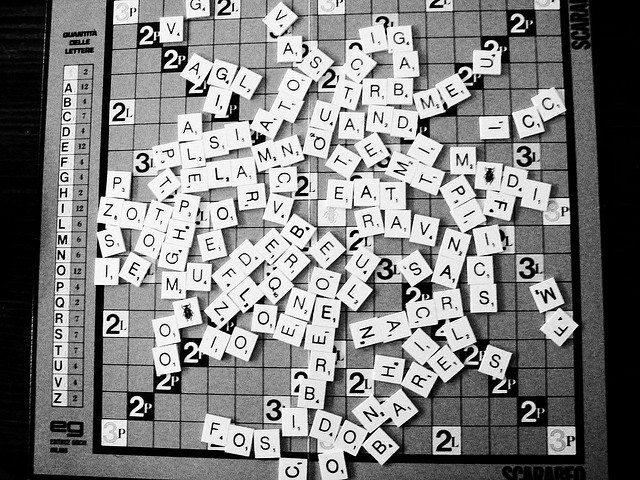Procrastination
We all do it: delaying, navel-gazing, waiting, stalling, a-hemming, hiding, turtling, humming, hawing –whatever you want to call it. We all have procrastinated…. never mind for things we didn’t want to do in the first place, we’ve all (each of us, you too!) even procrastinated on things we needed or wanted to do too. It’s human nature this thing we call procrastination. The action (vs. inaction) dilemma has probably been around for a long time. One classic example of procrastination is William Shakespeare’s hero, Hamlet. In his famous, “To be or not to be…” soliloquy, Hamlet weighs what modern motivational psychologists would call the “pros and cons” of acting (vs. procrastinating) to revenge the death of his father at the hands of his uncle Claudius. In the end (spoiler alert, here!), the job gets done, but due to the delay it gets quite messy for our Hamlet and everyone else around him. If only he had acted sooner!
Why do we procrastinate?

Well, often it’s because we don’t value the activity, we don’t see its importance, or maybe we fear failing at it. Whichever it is, achieving a goal depends first and foremost on having a goal to achieve. Many of us (in order to avoid the fear of failure) don’t even think of goals to achieve. You can’t fail if you don’t set a goal. Trouble is, you can’t win or experience happiness either if no goals are set. So, let’s talk about needs (we all have those) then since they are related to goals, at least indirectly. The best-known example in psychology of a theory of needs is that of Abraham Maslow (Maslow, 1943). Maslow argued that while people need to meet basic needs, they seek to meet successively higher needs in the form of a hierarchy. Once lower-level needs are met, progressively higher needs can be met too (if the skills, will and effort to act are there). Maslow’s theory was that human actions (or inactions) are directed toward meeting needs or achieving goals. Any given behavior could satisfy several functions at the same time; for example, going to work could satisfy a person’s needs for both self-esteem and for social interaction. The lower level needs have to be satisfied before higher-order needs can influence behavior. The levels are as follows : (1) Physiological – includes air, food, water, sex, sleep, other factors towards survival. (2) Safety – includes security of environment, employment, resources, health, property, etc. (3) Belongingness – includes love, friendship, intimacy, family, etc. (4) Esteem – includes confidence, self-esteem, achievement, respect, etc. (5) Self-actualization – morality, creativity, problem solving, etc. So, procrastinating is more difficult at the lower level-needs (imagine putting off breathing or delaying paying the mortgage) than at higher level ones (hmmmnnn….to show my compassion, should I donate money to a given charity or not?).
A second factor in procrastination, after we have identified a need (and the desired goal to meet it), is if we believe –or if we actually have– the ability or skillset necessary to act. Not each of us is born equal. Think about it. We may all want at some level to be able to match or surpass Wayne Gretzky’s or Haley Wickenheiser’s hockey achievements, but few of us have the genetic gifts necessary as a starting point. Being realistic about what is possible given our basic talents will certainly help avoid disappointment. So actions sometimes require some basic genetic tools to achieve them. Lacking hockey skill does not, of course, prevent playing hockey. We could instead play hockey for the fun and friendship of it, or for competing against our own more modest objectives.
A third factor is the desire or will to act (vs. procrastinate). Obvious one, to be sure, but without wanting or valuing it, it won’t happen. Gretzky and Wickenheiser were genetically gifted, but they also valued and wanted their successes too. This brings us to a second well-known psychological theory of human motivation. Self-Determination Theory (SDT) is concerned with supporting our natural or intrinsic tendencies to behave in effective and healthy ways. SDT has been well-researched and supported scientifically by a network of researchers around the world. The theory was initially developed by Edward Deci and Richard Ryan (2000) at the University of Rochester, and has been elaborated and refined by scholars from many countries. The core feature of the theory is the internal (vs. external) motivations for acting (vs. procrastinating). At one end are external forces like paying taxes or obeying speed limits. Then there is identifying with what someone else suggests or has achieved and wanting to be more like them. Going to law school because you want to be a top lawyer like your mother is a good example. Finally, there is acting based on completely internal and freely-chosen codes of conduct. The altruism of Mother Teresa and Ghandi are the classic examples here. Lots of research has shown that long-term dedication (and hence, not procrastinating) is related to more internal motivations. Remember that Wayne Gretzky went on to coach and manage hockey teams after he retired: that’s internal motivation.
A fourth factor is putting in the necessary effort and sacrifice to achieve it. Some amount of failure and disappointment is normal in order to achieve eventual success (remember the 1998 Canadian Men’s Hockey team? Gretzky was on that one, too). Once you have the will and the skillset to achieve a goal, there are lots ways to help you overcome the effort problem. The effort problem is usually practical enough to overcome: improve our skillsets though education and concrete practice. Lots of practice. And learning how to accept some failures along the way and bouncing back (instead of procrastinating). Be willing to prioritize and sacrifice to focus on what important things you want to achieve. And put in the time needed to improve your skills.

So, to conclude, we have covered that actions are often the result of trying to achieve goals in order to meet valued needs. And, we have seen that acting can be valued for external reasons, or for internal reasons. Procrastination then comes when needs are not identified or valued, when there is fear of failure, when there is no genetic talent, no will to act, and no practice. Sounds like action is a lot of work, right? It is but the rewards are great too. Not just in terms of actual successes (which are great), but also in the reward of simply doing one’s best or doing what one freely chooses and values.
Self-Determination Theory (SDT) is a theory of motivation. It is concerned with supporting our natural or intrinsic tendencies to behave in effective and healthy ways. SDT has been researched and practiced by a network of researchers around the world.
The theory was initially developed by Edward L. Deci and Richard M. Ryan at the University of Rochester, and has been elaborated and refined by scholars from many countries. Deci and Ryan are professors in the Department of Clinical and Social Sciences in Psychology at the University of Rochester, where they direct a pre- and post-doctoral training program focused on SDT.
References
Deci, E. L., & Ryan, R. M. (2000). The ‘what’ and ‘why’ of goal pursuits: Human needs and the self-determination of behavior. Psychological Inquiry, 11, 227-268.
Maslow, A. H. (1943). A Theory of Human Motivation. Psychological Review, 50, pp. 370.
—
We are here to help you.
For more information on our services, or for help on deciding which of our team psychologists to choose, don’t hesitate to contact our clinic coordinator at 514-337-2473, ext. 0, and it is with great pleasure that we will discuss with you the psychological services we can offer you.

